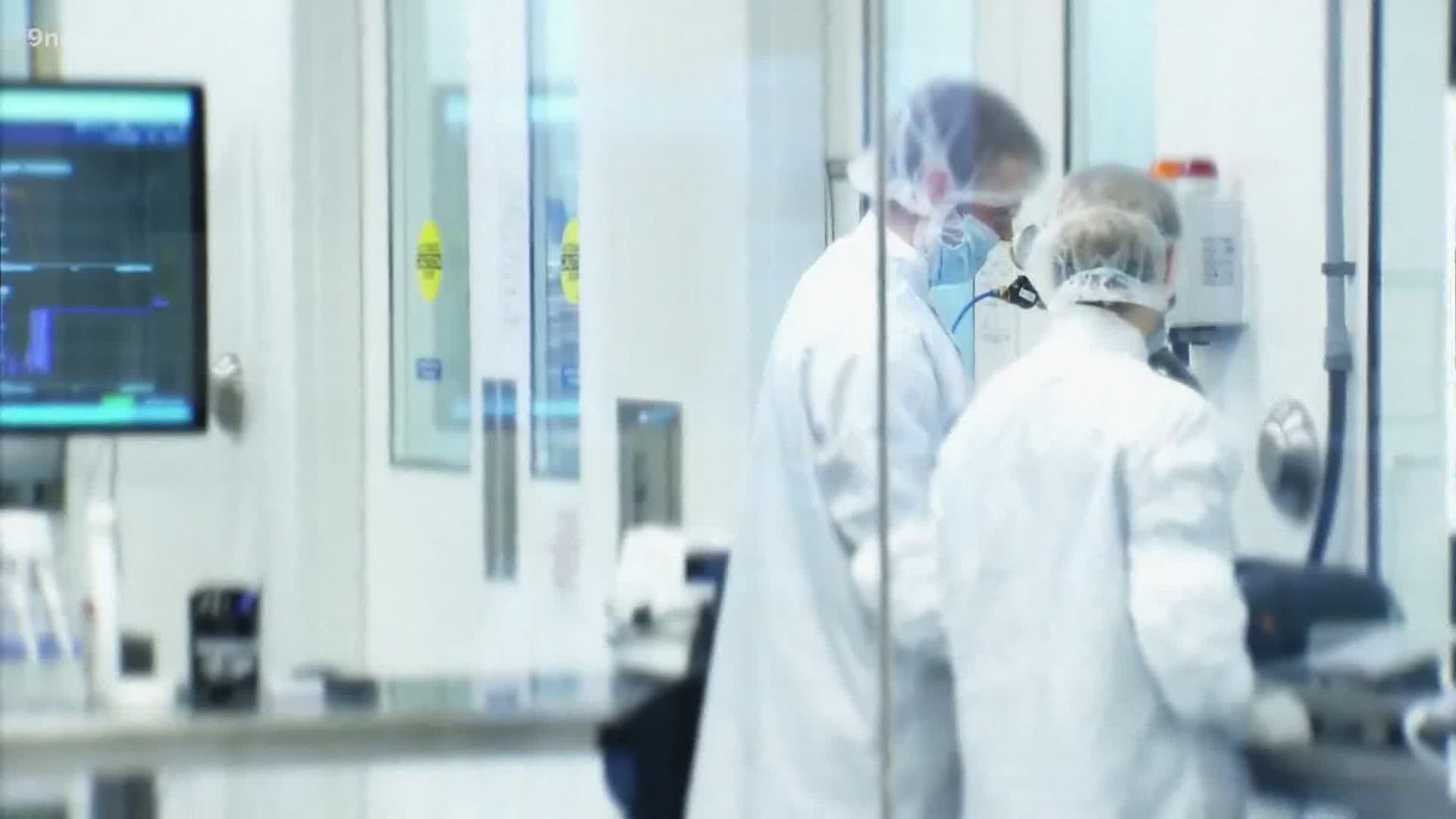COLORADO, USA — Gov. Jared Polis' (D-Colorado) medical advisory group has released a preliminary plan for distributing the COVID-19 vaccine in Colorado, when it becomes available.
"It's really a values proposition, so everybody is equal," said Dr. Anuj Mehta with National Jewish Health.
The document on the Colorado Department of Public Health and Environment's (CDPHE) website says the recommendations from the Governor's Expert Emergency Epidemic Response Committee (GEERC) are meant to provide guidance for state-level distribution to local jurisdictions and to provide primary vaccine providers with guidance on who to vaccinate and when.
According to the document, the long-term goal of the vaccination program is to vaccine every eligible person in the state.
It does, however, acknowledge that any approved or authorized vaccines will be in extremely short supply at first.
Dr. Mehta serves as chairman of his group called Vaccine Allocation Planning. They created the vaccine distribution priority system.
"Some people through their jobs have the ability to save multiple lives," Mehta said.
The core principles of fairness, transparency, consistency, proportionality, accountability, duty to care, and the duty to steward resources especially when scarce are critical to the process of developing a vaccine strategy, according to the document.
The document says there are four key groups to consider when deciding who gets the vaccine first:
- Critical Workforce -- This group includes healthcare workers, firefighters, emergency medical services, police officers and critical public health personnel. These people were chosen, according to the document, because they often have the highest risk of exposure to COVID-19 through their work and their critical roles in maintaining essential societal functions. They are often able to save the lives of others, the document says, providing instrumental value to society.
- Essential Workers -- These are people who work for critical businesses and are deemed essential by those businesses. Examples include grocery store workers, food service workers, transportation personnel, electric and water workers, teachers, vaccine manufacturing personnel and others. Essential workers may bear increased risk of exposure to COVID-19, the document says, and may be a "vector of infection" to more vulnerable populations.
- Individuals at Risk for Moderate to Severe Disease and Death -- These are people who are at significantly higher risk of developing moderate to severe disease and dying from COVID-19, according to the document. Key risk factors include living at a nursing or long-term facility, those 65 and over, and those who are obese or have diabetes, cancer or other conditions.
- General Public -- Adults ages 18-64.
Here are the vaccination phases as they stand in the preliminary plan:


The plan also recommends that CDPHE and local public health agencies attempt to direct vaccines to emerging hotspots based on up-to-date positivity and transmission rates.
In addition, the document addresses the disproportionate effect the virus has had on communities of color and how to respond to that. It says those health inequities need to be considered at every level of the COVID-19 response, noting that vaccination programs could exacerbate inequities if not done in an equitable and fair manner. It says concerns about vaccine hesitancy among communities of color must also be addressed.
"That goes to the issues of structural racism. It's not one of individual behavior. (It's) decreased access to healthcare, living in more concentrated populations," Mehta said. "I do really believe that if we implement this and the way we've set out, that it could address some of the inequities that we've seen already."
The document also addresses vaccine hesitancy among the population in general, noting that anywhere from 30-50% of individuals have significant concerns about a COVID-19 vaccine, with the rate among underrepresented minorities even higher.
It says CDPHE and other organizations in Colorado have developed robust community engagement groups and equity response teams to address concerns around vaccine development and safety.
Vaccine hesitancy among healthcare workers could also be an issue, according to the document. It notes that the speed of development and testing, as well as recent concerns about political influence in the approval process, have raised the possibility of healthcare workers avoiding a COVID-19 vaccine.
It recommends that CDPHE communicate openly with healthcare workers and institutions regarding their concerns. It also recommends that various organizations develop a transparent process of evaluating and communicating vaccine data with healthcare workers as they become available. The document says the hope is that if healthcare workers feel the vaccine is safe, the general public will, too.
The document concludes by saying the vaccine allocation system must be transparent, fair, equitable and just, describing its phased approach that combines "what you do" and "who you are," with prioritization based on societal function, instrumental value, saving the most lives and equity.
SUGGESTED VIDEOS: COVID-19 Coronavirus

